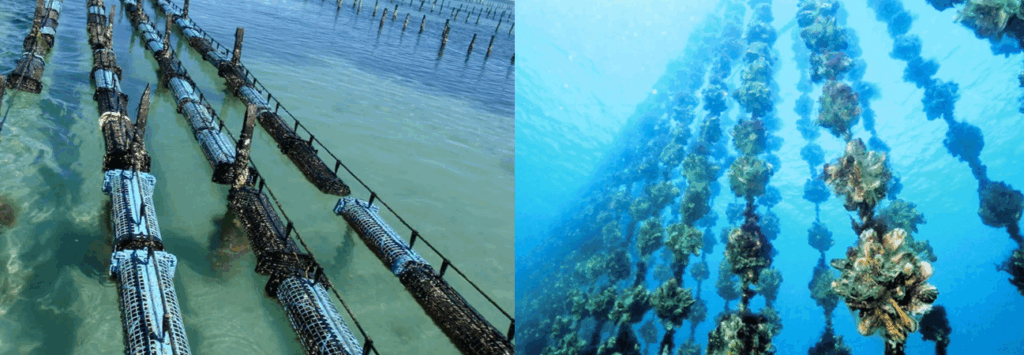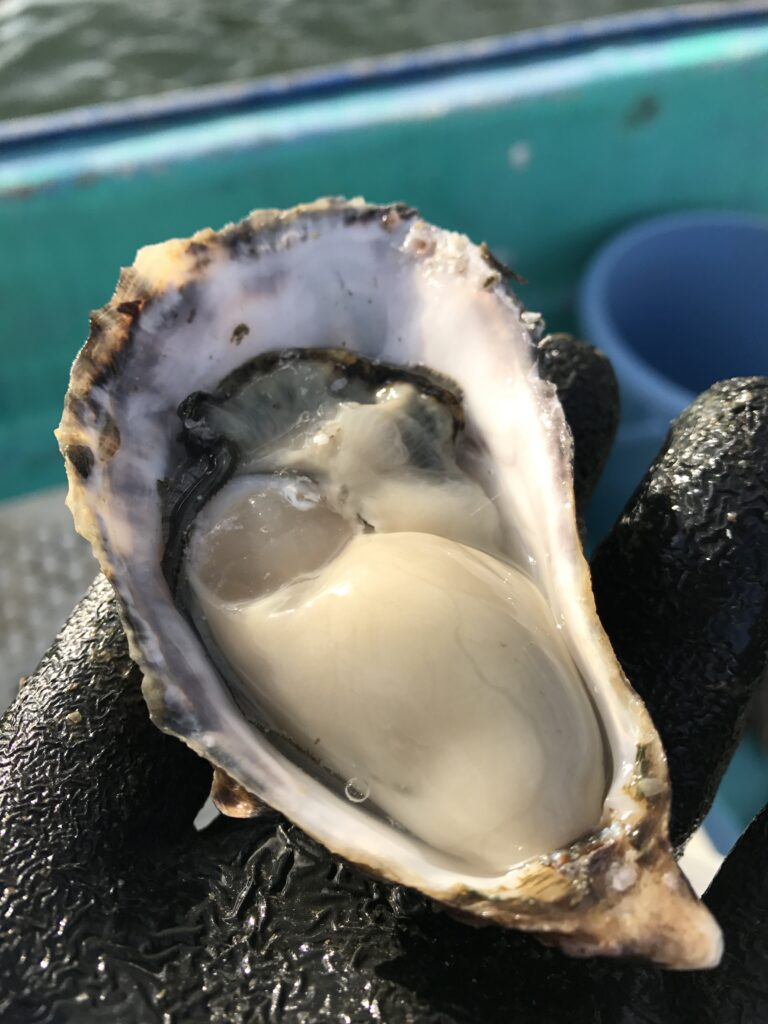
Left: Basket culture, Right: Suspended culture
The “Pacific Oyster,” one of Japan’s most popular seafood products, enjoys global acclaim. Interestingly, there are two main farming methods used to cultivate these oysters: suspended culture and basket culture.
The suspended (or hanging) method involves attaching oysters to ropes and submerging them in the sea, allowing them to grow relatively naturally.
In contrast, basket culture involves placing oysters in special baskets suspended in the sea. These baskets are periodically retrieved so farmers can manage and maintain the oysters more closely.
At our company, we handle oysters produced using both farming methods. In this article, we would like to focus on basket-cultured oysters.
Globally, there is a growing preference for larger oysters weighing over 100g, most of which are typically produced using the suspended culture method. On the other hand, oysters grown in baskets roll naturally within the basket during cultivation, causing their shells to gradually wear down. Additionally, farmers manually polish the shells at regular intervals. These extra steps result in oysters that are meatier and richer in flavor.

Basket-cultured oysters are smaller in size, but they are characterized by their round shells, deep cups, and rich meat content
However, because the shells become thinner and lighter through this process, the oysters may appear smaller in size. This unfortunately leads to situations where oysters, despite being full and high in meat quality, are less favored simply due to their smaller appearance (less weight per piece).
That said, isn’t the true value of an oyster found not in its shell size, but in the quality and yield of its meat? We encourage you to try basket-cultured oysters.
Of course, we offer both suspended and basket-cultured oysters, so please feel free to contact us if you’re looking for high-quality products.
Contact TSUJISHO Ltd.
E-mail: info@tsujisho.net
